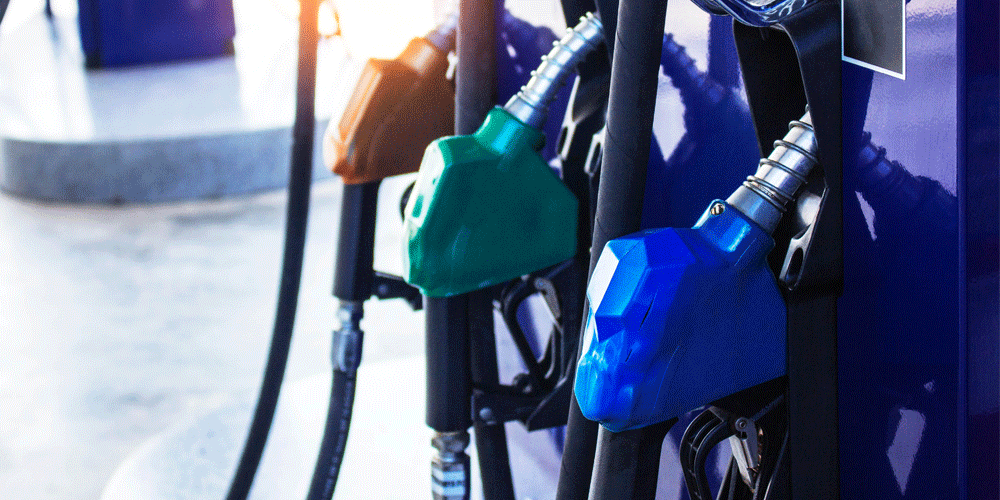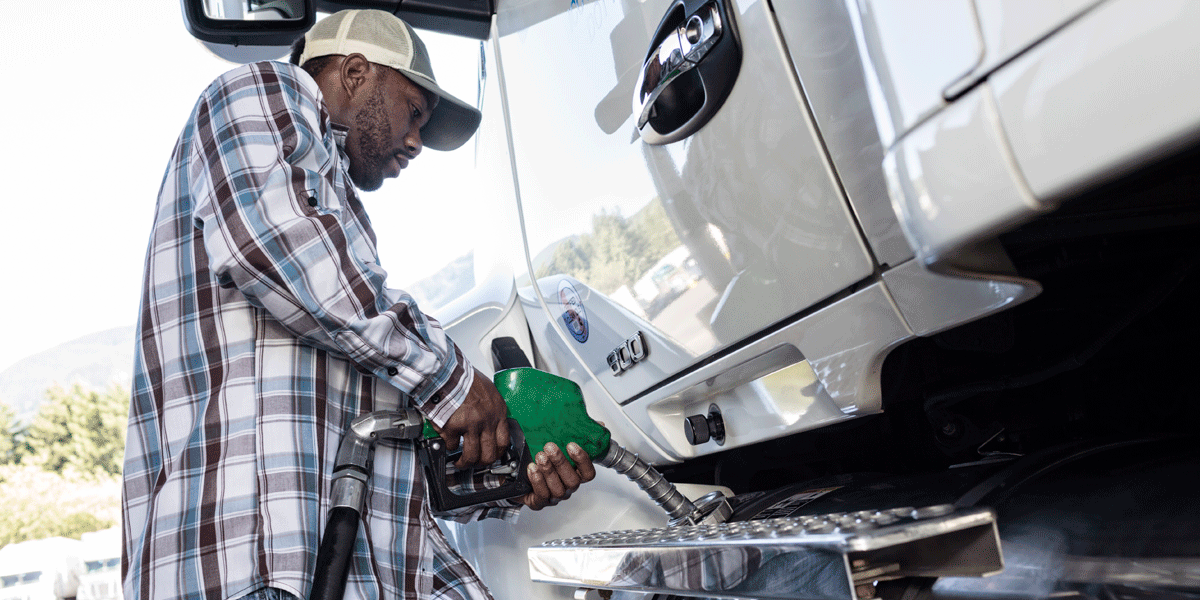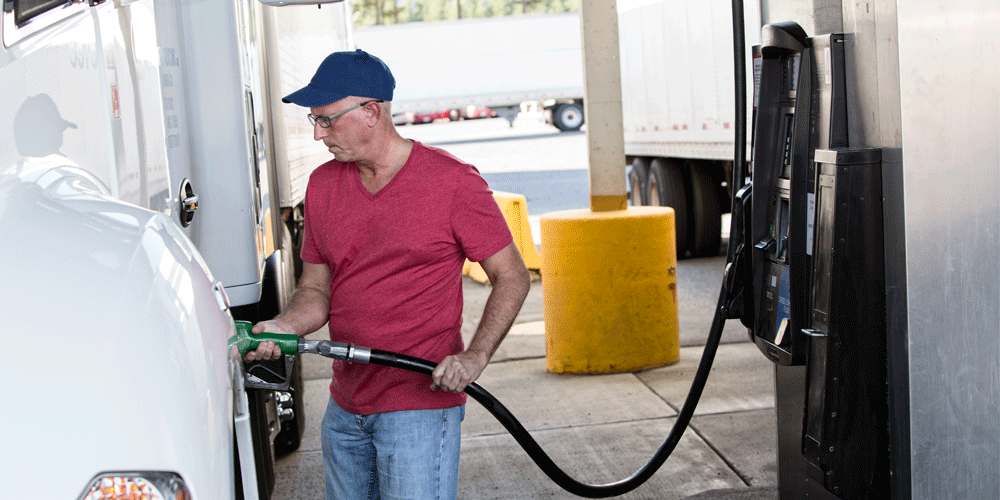Samantha joined the Anderson Trucking Family in November of 2012 as a specialized driver manager and managed a fleet of mixed company and contractor drivers. In the spring of 2014, she transitioned to the driver administration department and began working in contractor services. While in contractor services, Samantha familiarized herself with all processes, procedures and information in regards to driver contracts, pay and settlements. She is currently the operations support manager and oversees both the contractor services department as well as the driver settlement department and leads both of her teams to ensure our drivers receive the highest level of service required to help navigate their accounts and settlements on a daily basis.
Fuel prices. They’re only getting higher and higher with seemingly no end in sight.
What are you to do as an independent contractor or an owner-operator?
Sure, you can do all you can to maximize your fuel efficiency and save money on fuel with helpful fuel discounts, but what can you do to ensure you’re being paid enough to cover fuel costs? Fuel surcharges aren’t regulated — no customer has to pay them — but it can help ease the burden when they do.
Fuel surcharges can be confusing to understand, however. Every shipper pays them differently, as do transportation companies. How do you know which loads to select based on fuel surcharges?
At Anderson Trucking Service (ATS), we want to make sure you understand fuel surcharges so you can make informed decisions when it comes to load selection.
When you’re finished reading, you’ll understand exactly what fuel surcharges are, how fuel surcharges work and how you can select your loads to cover your fuel costs — and even make a profit in some cases. You’ll walk away with helpful knowledge that’ll make you more strategic about your load selection.
What is a Fuel Surcharge?
Fuel surcharges are fees that shippers pay — on top of freight rates — to help cover the cost of fuel. By no means do they typically cover the entire cost of fuel, but they can help.
Because company drivers have their fuel taken care of by their company, fuel surcharges aren’t something they need to worry about.
Independent contractors and owner-operators, on the other hand, have to pay close attention to them. They may even make their load decisions based on what a customer is paying in fuel surcharges and how the company is paying it out.
How Do Shippers Pay Fuel Surcharges?
The standard fuel surcharge calculation takes into account the current price of fuel and divides it by the average mile per gallon a truck gets.
For example, let’s say the shipper already added the base price of fuel into their shipping contract at $1.25, but the price of fuel is currently $5.65. That’s an increased cost of $4.40. Divide that by the average miles per gallon a truck gets (let’s say six mpg) and you get $0.73. That means the shipper will pay a fuel surcharge of $0.73 per mile.
However, shippers pay fuel surcharges out to transportation companies — which are passed onto the driver — on different schedules. There are four pay schedules shippers may use to pay out fuel surcharges.
Let’s dive into each pay schedule further.

Standard Fuel Schedule
With a standard fuel schedule, the shipper relies on the Department of Energy’s (DOE’s) national fuel price index. Shippers pay a per-mile fuel payment in accordance with the DOE’s national fuel prices — which are constantly fluctuating.
This is the most common schedule shippers use; lists of per-mile fuel payments are updated either weekly, biweekly or monthly.
Percentage of the Line Haul Rate Schedule
This method of paying out fuel surcharges also relies on the fluctuating DOE fuel prices. Shippers pay a fuel surcharge as a percentage of the line haul. This percentage changes depending on the current cost of fuel.
For instance, let's say a shipper is paying $2,000 for a transportation company to haul their load from Point A to Point B. They agree to pay 4 percent of the line haul for fuel surcharges. As a result, the shipper would pay $80 in fuel surcharges for a total of $2,080 for their shipment.
Third-Party Consumption Management Schedule (Breakthrough Fuel)
Third parties can also be utilized by shippers to take care of fuel costs. Shippers do this to ensure they’re paying the most accurate prices for fuel surcharges.
Fuel recovery and management technologies take into account fuel prices for the specific region the driver will be passing through to haul the freight from Point A to Point B. These fuel prices are utilized to pay out the fuel surcharge.
This technology can make all the difference when, for instance, a driver is passing through a state with notoriously high fuel prices (like California) versus a region with lower fuel prices (for instance, rural areas in the midwest). Rather than providing a blanket price based on the DOE fuel index, the surcharge can be paid out according to the prices at the stations the driver will be filling up at.
No Fuel Surcharge
On the other hand, some shippers may not pay a fuel surcharge at all. Instead, they may offer a higher line haul rate to avoid the intricacies of calculating accurate fuel surcharges and managing a fuel surcharge schedule.
As a result, trucking companies that pass 100 percent of the fuel surcharge onto the driver will split the rate and give you a small amount for fuel. That way, as a driver, you’re still receiving funds to cover your fuel costs.
How Do Trucking Companies Pay Fuel Surcharges to Their Drivers?
As a driver, you might not necessarily care how fuel surcharges are paid by shippers — you just want to make sure you’re getting paid.
However, you have to understand that transportation companies can also pay their drivers differently for fuel surcharges.
Some companies pay their drivers straight pass through, which means they’ll pass 100 percent of what the shipper paid for fuel onto you, the driver. The trucking company doesn’t take a cut.
When a shipper doesn’t pay a fuel surcharge, the trucking company will break up the rate and calculate how much money should go to fuel costs. They’ll pay you 100 percent of the fuel surcharge and then take their normal rate off the line haul rate. For instance, if you are paid 70 percent of the line haul, you’ll get 70 percent of what the shipper paid and then 100 percent of the fuel surcharge.
Another way a driver is paid fuel surcharges relies on the national average; this is common in flatbed divisions or carriers because oftentimes shippers pay an all-in rate and don’t pay a separate fuel surcharge. Trucking companies utilize a complicated mathematical equation to pay drivers a specific rate per loaded mile depending on how much fuel costs.
How Fuel Surcharges Affect Load Selection
As a driver, you should know how to read fuel surcharges on your load offer. Having a strong understanding of how your fuel surcharges are being paid out will help you in your load selection.
When reviewing your load offers, consider how many loaded miles you’ll run and how much money you’ll spend on fuel. Then compare that cost to how much you’re being paid in fuel surcharges.
You’ll need to consider not just the distance you’re driving, but also how heavy the load is and how fuel-efficient your truck is. Your fuel efficiency is dependent on a number of factors, including the weight of the load and the roads you’re driving on. For instance, if you’re driving through the mountains or you’re hauling an especially heavy load, your fuel economy may suffer.
If you have a light load and a fuel-efficient truck, chances are that you may break even on fuel (or even make a profit if you have a full tank and you won’t need to fill up during the load). If you’re hauling a heavy load, you’ll probably be spending more on fuel and it’ll be harder to break even.
Be strategic when choosing your loads based on the fuel surcharge. Try to either choose a load that’s paying a great fuel surcharge or a load that’s paying a substantial rate that’ll help account for the loss you’ll suffer in fuel costs.
Save Money on Fuel
Many drivers are concerned about the rising fuel costs; you’re not alone in that. But trust that, as the fuel costs rise, so too will fuel surcharges. Fuel surcharges are designed to help drivers as fuel prices fluctuate.
It’s best to choose a company that passes most — if not all — of fuel surcharges onto you.
You should also look for a company that will pass their fuel discount onto you.
If you’re still looking for more ways to save a few bucks, these tips will help you increase your fuel efficiency.



